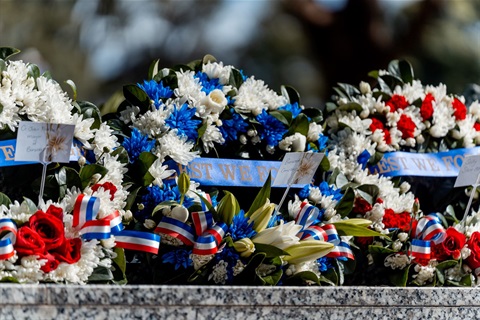The history of the Sandakan Death Marches

The Sandakan Death Marches were a series of forced marches in Borneo from Sandakan to Ranau which resulted in the deaths of 2,428 Allied prisoners of war held captive by the Empire of Japan during the Pacific campaign of World War II in the Sandakan Prisoner of War (POW) Camp. By the end of the war, of all the prisoners who had been incarcerated at Sandakan and Ranau, only six Australians survived, all of whom had escaped. It is widely considered to be the single worst atrocity suffered by Australian servicemen during the Second World War.
The year was 1945, the place Sandakan, then the capital of British North Borneo (Sabah) where 2,428 Prisoners of War (POWs) were interned by the Japanese. They numbered 641 British and 1,787 Australian military personnel taken during the fall of Singapore. The POWs were now in their third year of captivity by the Japanese.
They were used as labourers to build a military airstrip in Sandakan. In late 1944 as the Allied Forces won back much of the Pacific, the airstrip itself was destroyed by repeated air operations.

At the beginning of 1945 the Japanese began moving the POWs, 260kms west into the mountains to the small settlement of Ranau. After enduring starvation, overwork and beatings, the prisoners were forced on three marches through the jungle and tracks from Sandakan to Ranau.
The losses were tragically high on these gruelling marches between January and June 1945. During the first march from January to March, of the 455 Prisoners of War who set out, over 100 were lost to either exhaustion or disease. Others were shot or beaten to death. The second march, a 'more brutal version of the earlier march' (Laden, Fevered, Starved) from May to June saw similar losses. On 29 May about 530 marchers set out to Ranau, yet only 183 reached Ranau on 27 June 1945.
At the war's end, in late August 1945, the only survivors were six Australians who had escaped from the death marches. The two who escaped into the jungle on the second march in June 1945 were helped by locals before being rescued by allied forces. The other four all escaped from Ranau in July 1945 and were also helped by the locals in the area until they too were rescued by allied forces in early August 1945.
The fallen POWs are named on the Honour Roll at the Commonwealth War Graves Cemetery at Labuan. Six men escaped this most horrific atrocity, just six out of the 2,428 men.
These men were:
- Bombardier Richard (Dick) Braithwaite, 2/15 Field Regiment
- Lance Bombardier William (Bill} Moxham, 2/15 Field Regiment
- Warrant Officer William (Bill) Hector Sticpewich, AASC
- Gunner Owen Campbell, 2/10 Field Regiment
- Private Nelson Short, 2/18 Infantry Battalion
- Private Keith Boterill, 2/19 Battalion